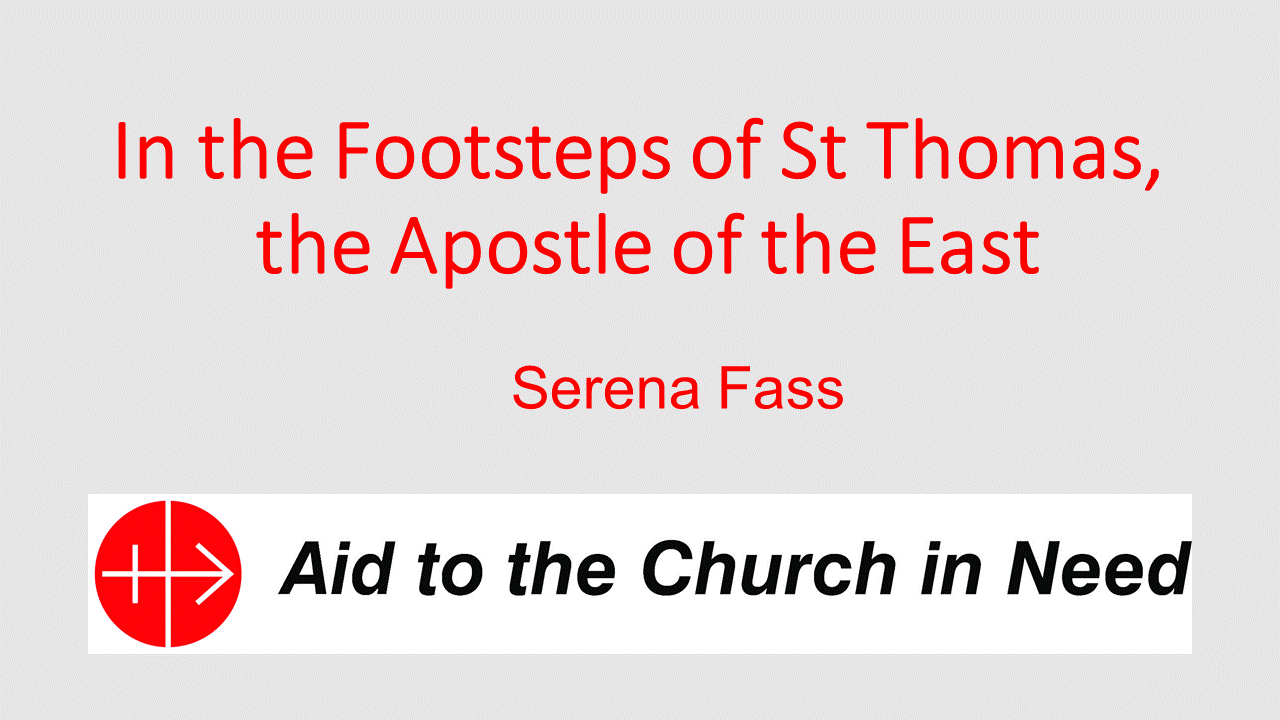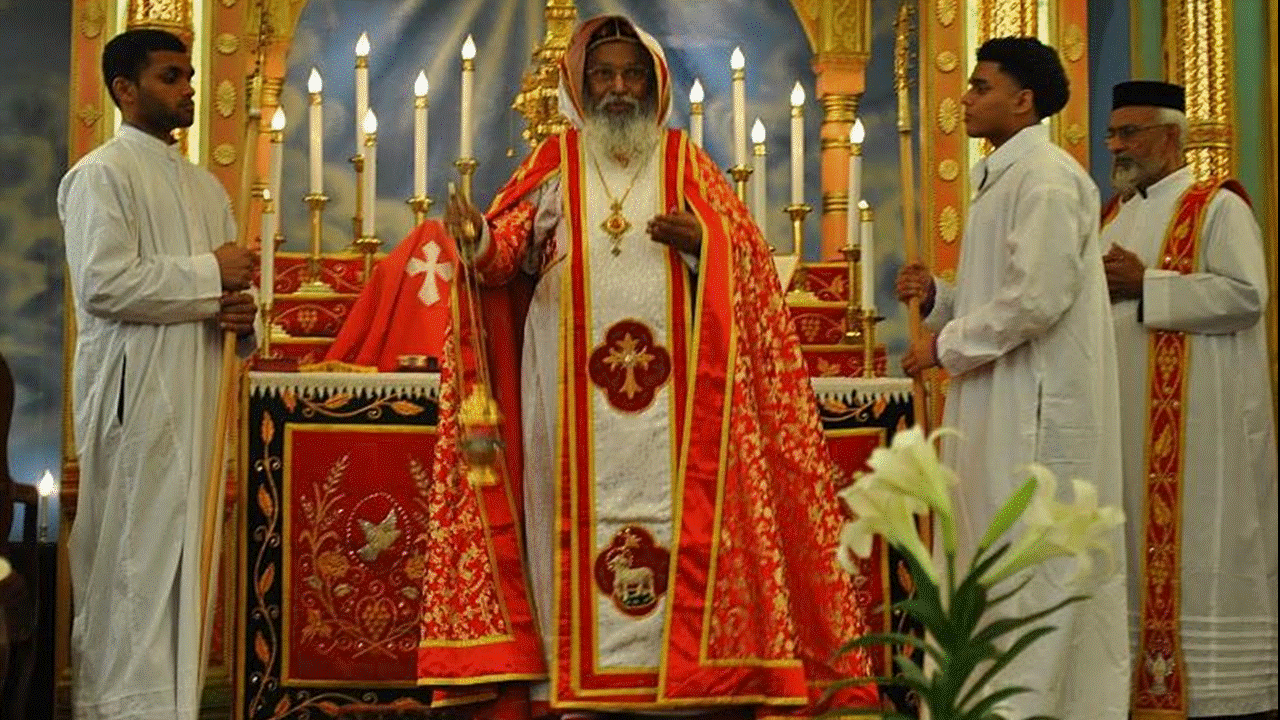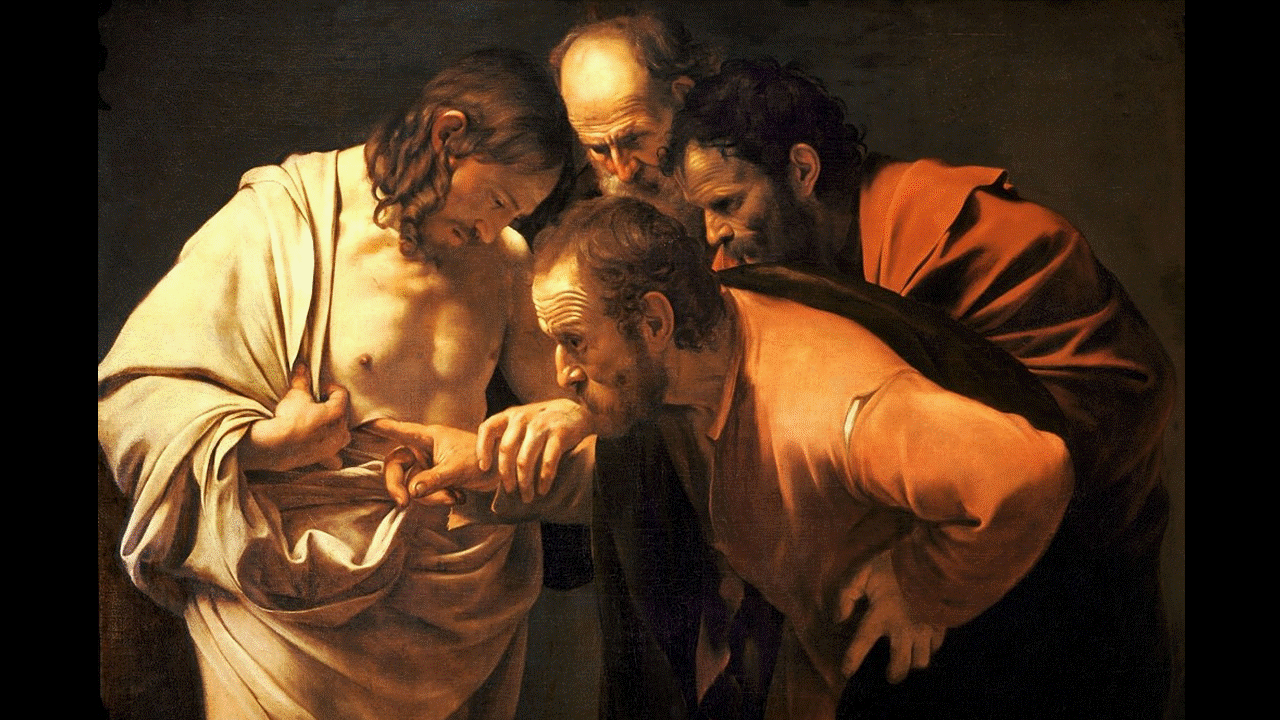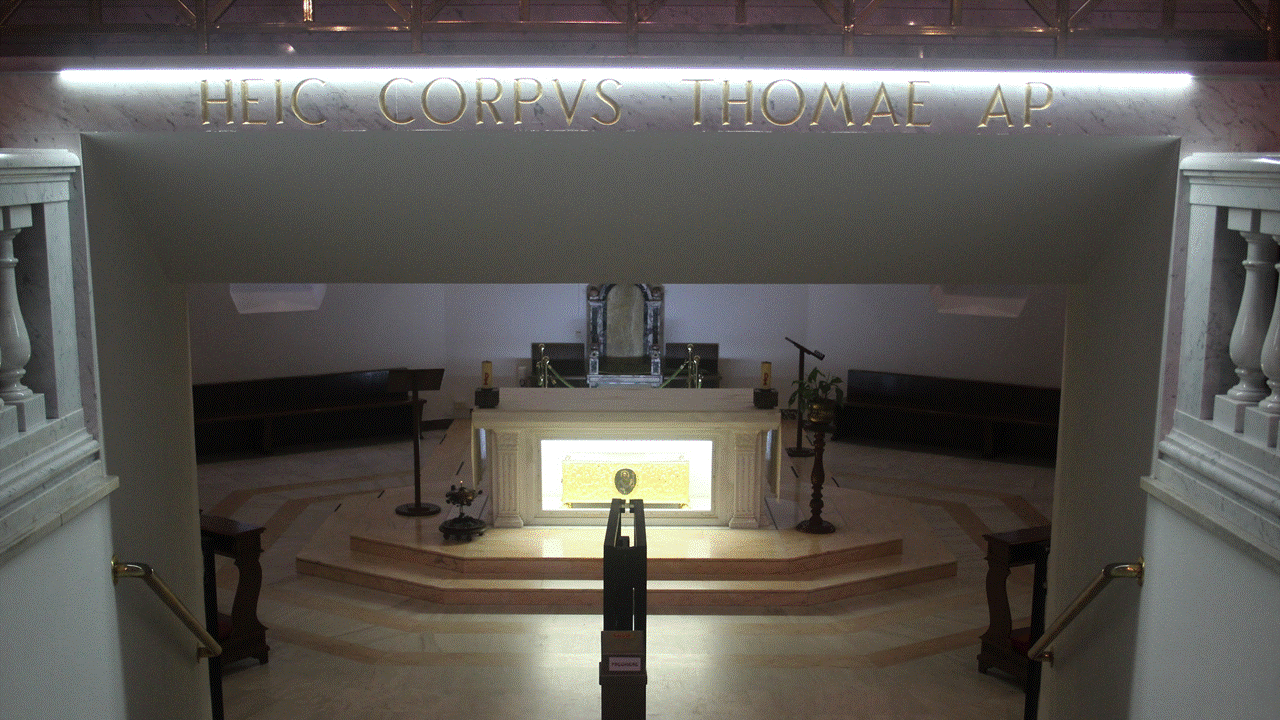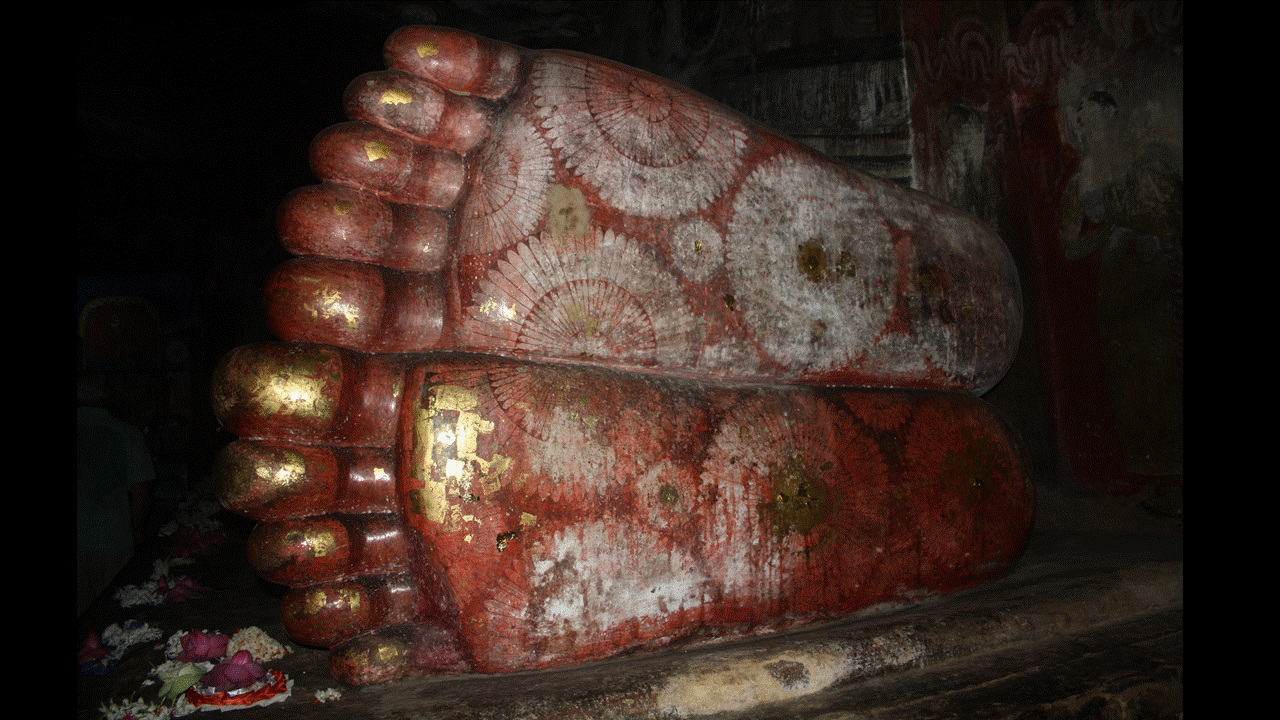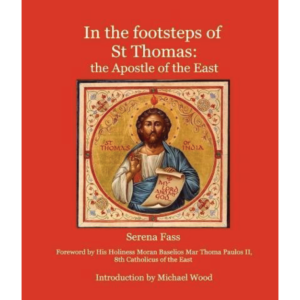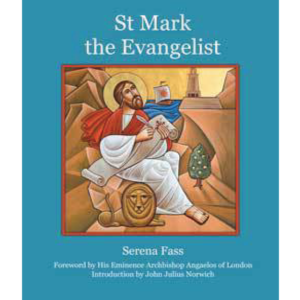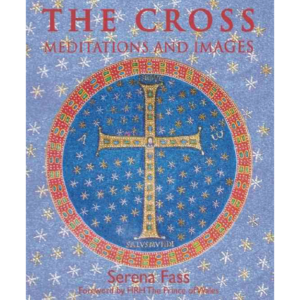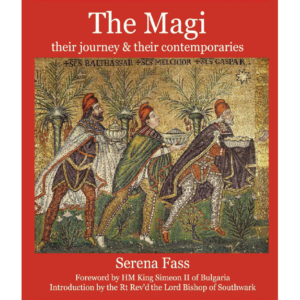St Thomas – Apostle of the East
PREFACE
St Thomas has always been my favourite Apostle, largely because of the story of his first doubting the Resurrection and then being convinced, something that probably applies to many of us in our walk with Jesus. And he was the most adventurous traveller of the eleven remaining disciples.
I have been a passionate traveller since childhood and have been fortunate enough to go to many of the places where St Thomas went, although in my case in comfort, by air, ship and car; in his, by boat, perhaps by horse or camel and on foot. I share his love of India. Little did I realise that my first visit in 1969 would lead me back me to India nearly every year, often taking people with me to share its magic. Meeting Mother Teresa in Calcutta in 1971 was a life-changing experience.
When it was suggested that I compile this book, I realised that I had most of the material I needed if I wanted to follow in St Thomas’ footsteps: in the Middle East, Afghanistan, Pakistan, India, Sri Lanka and China; with countries like Syria and Iraq sadly being completely unvisitable now. Other places have been destroyed and places that I photographed then are not there to take now.
The many introductions I had during my recent journey in Kerala proved invaluable. Having compiled my book of the Magi and their journey, I was fully immersed in the Roman, Jewish and Parthian world of the first century AD.
Did Jesus’ Apostle Judas Thomas take the Gospel to the East in the middle of the first century? Did he only go to King Gondophares in Taxila (Parthia) in what is now Pakistan, but what was then Northern India and die there, as some think, or did he also go by ship to Kerala and evangelise Southern India and continue from there to Sri Lanka and China? There are many compelling early accounts that say he did, as well as statements from Prime Minister Jawaharlal Nehru and Dr Rajendra Prasad, President of India, that the vibrant church of Thomas Christians in South India is a living witness that St Thomas did indeed bring the Good News to India, both North and South. Or did Christianity only reach Kerala with Persian Nestorian merchants in the 3rd and 4th centuries? Or with the Jewish Christian merchant Kanai Thomas, accompanied by 72 Syrian families in AD 345?
Let the reader decide which of these traditions is true and I hope they will enjoy the quest as much as I have.
Serena Fass, Pentecost 2017.
FOREWORD BY HH The Catholicus
It is a real pleasure to introduce this delightful book about our beloved patron, Saint Thomas the Apostle, who first brought the Christian Faith to our shores in AD 52. His apostolic ministry is among the earliest Christian traditions and has sustained the Faith through many generations, so that the same vibrant witness, held by millions today, owes everything to his legacy.
Over many years Serena Fass has been following in the footsteps of Saint Thomas from his birth in Galilee, to Taxila in modern-day Pakistan, and also extensively in Kerala and through to his martyrdom in Mylapore, Tamil Nadu. She has beautifully illustrated this volume with her evocative photographs, providing the reader with an unique insight into the journey of the saint and the places where he founded churches.
I pray that all who follow in the footsteps of Saint Thomas will receive peace and joyin the Risen Christ, God’s favour and protection and the benediction of the Lord’sfaithful Apostle. May this book be a blessing to all who read it!
God bless, Baselios Marthoma Paulos II.
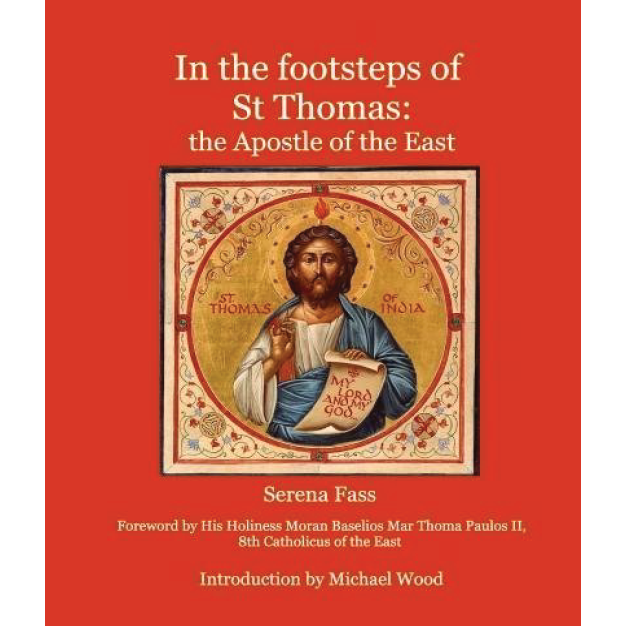
INTRODUCTION TO ST THOMAS – by Michael Wood
St Thomas, who took the Gospel to India, according to traditions which first appear in the late 2nd century AD. In this book Serena Fass tells us this story with a traveller’s eye and deep empathy across the roads of ancient Parthia and Gandhara to the palm forests of tropical South India. As a traveller’s tale alone it takes some beating. But of course it is much more.
Scholars these days tend to think the goal of Thomas’s mission was the court of King Gondophares of Taxila near Rawalpindi in present day Pakistan, but South Indian Christians have always insisted that their church was also founded by Thomas, whose original tomb still stands near Chennai. His landfall is said to have been at a place called Muziris near Cranganore in Kerala, where a gleaming white Christian basilica commemorates him today. What is so intriguing about this tradition is that it pinpoints the very place and the moment when sea voyages linked the Roman world with South India, as we can see in one of the most remarkable texts from the ancient world, the Periplus, or Gazetteer, of the Red Sea. Written in Thomas’s lifetime about AD 60, the Periplus lists twenty ports down the west coast of India, just the journey Thomas would have made. And the most important – Pliny calls it ‘the first market of India’ – was indeed Muziris, where the Greek and Roman colonists even erected a temple to the deified Emperor Augustus.
Here then, of all places, we might imagine the Greek-speaking Thomas to have made his landfall: on a trade route well known to the merchants of the Eastern Mediterranean, who included Jews. Till recently, the site of Muziris had never been discovered in the intricate filigree of lagoons in the Kerala backwaters north of Cochin. But in 2005 archaeologists from Kerala found it four miles inland, by an old bed of the Periyar river. The main mound is 600 metres across, in a shady grove of palms, bananas and jackfruit, festooned with twining pepper vines. Coins of Nero and Tiberius have been found nearby, and excavations have revealed that the mound is stuffed with Roman amphorae, terracottas, Mediterranean glass ornaments, and precious stones. Here then, at last, we may imagine the apostle making his landfall on the outermost edge of the Roman world.
But did he? The earliest Syriac and Greek traditions place him up in the Indo-Greek court at Taxila; but Muziris was a major trading place for the merchants of the eastern Mediterranean in the first two or three centuries AD, and the landing of a Roman Jewish traveller in the Periyar River around the time of the Periplus is plausible in every way. If unverifiable, the tradition ought to be true, in a land where oral traditions have had extraordinary tenacity – where among the Tamil Jain communities, for example, entire poems have been handed down from the late Roman world to modern times. So too the tale of Thomas’s death is still part of the Tamil Christian tradition at St Thomas’s Mount outside Madras (Chennai) from where his remains were translated to Edessa in Syria as recorded by St Ephraim in the 4th century.
It is a literally amazing story; and not content with following Thomas along the Silk Road and down to Chennai, Serena even takes us in a poignant epilogue back to Thomas’s final resting place in Ortona on the Adriatic in central Italy. What an adventure!
Michael Wood, Historian, author and TV film-maker, Epiphany 2017.
CONTACT US

